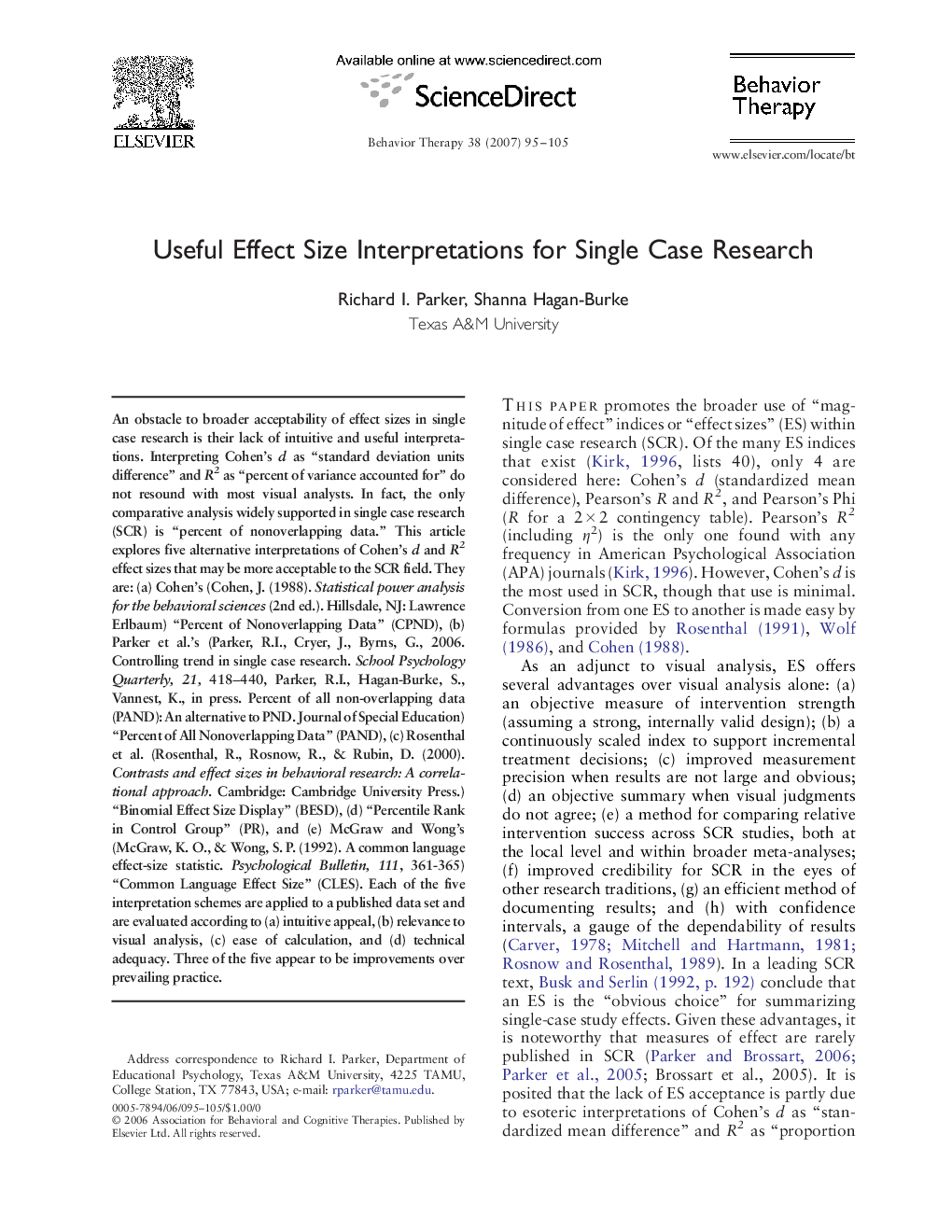| Article ID | Journal | Published Year | Pages | File Type |
|---|---|---|---|---|
| 901720 | Behavior Therapy | 2007 | 11 Pages |
An obstacle to broader acceptability of effect sizes in single case research is their lack of intuitive and useful interpretations. Interpreting Cohen’s d as “standard deviation units difference” and R2 as “percent of variance accounted for” do not resound with most visual analysts. In fact, the only comparative analysis widely supported in single case research (SCR) is “percent of nonoverlapping data.” This article explores five alternative interpretations of Cohen’s d and R2 effect sizes that may be more acceptable to the SCR field. They are: (a) Cohen’s (Cohen, J. (1988). Statistical power analysis for the behavioral sciences (2nd ed.). Hillsdale, NJ: Lawrence Erlbaum) “Percent of Nonoverlapping Data” (CPND), (b) Parker et al.’s (Parker, R.I., Cryer, J., Byrns, G., 2006. Controlling trend in single case research. School Psychology Quarterly, 21, 418–440, Parker, R.I., Hagan-Burke, S., Vannest, K., in press. Percent of all non-overlapping data (PAND): An alternative to PND. Journal of Special Education) “Percent of All Nonoverlapping Data” (PAND), (c) Rosenthal et al. (Rosenthal, R., Rosnow, R., & Rubin, D. (2000). Contrasts and effect sizes in behavioral research: A correlational approach. Cambridge: Cambridge University Press.) “Binomial Effect Size Display” (BESD), (d) “Percentile Rank in Control Group” (PR), and (e) McGraw and Wong’s (McGraw, K. O., & Wong, S. P. (1992). A common language effect-size statistic. Psychological Bulletin, 111, 361-365) “Common Language Effect Size” (CLES). Each of the five interpretation schemes are applied to a published data set and are evaluated according to (a) intuitive appeal, (b) relevance to visual analysis, (c) ease of calculation, and (d) technical adequacy. Three of the five appear to be improvements over prevailing practice.
